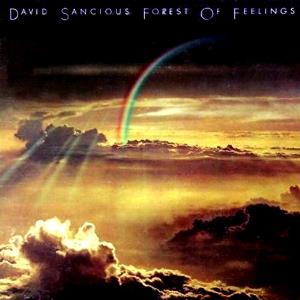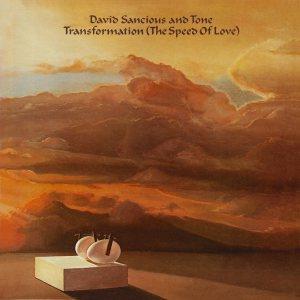Many people know that the American musician David Sancious was once a member of The E Street Band, the backing band of Bruce Springsteen. He contributed to the first three Springsteen albums and on Human Touch (1992). Furthermore Sancious is a multi-instrumentalist, who is best known for his playing on keyboards and guitar. He left The E Street Band in 1974 to form his own band Tone, with which he recorded several albums. He subsequently became a popular session and touring musician, most notably for Stanley Clarke, Jon Anderson, Zucchero Fornaciari, Peter Gabriel and Sting, among others. Just recently Esoteric Recordings released the remastered editions of Forest Of Feelings (1975) and Transformation (The Speed Of Love) (1976). For many years these solo albums belong to my vinyl collection. I always regretted that I could never get hold of CD copies of these excellent albums. Until now! Before I go a bit deeper into the music on these almost instrumental CDs, a short history lesson is appropriate! In August 1974 Sancious and drummer Ernest Carter left the E Street Band to form Tone with Gerald Carboy on bass. At various times the band would feature Gail Boggs, Brenda Madison, Patti Scialfa (Bruce Springsteen), Gayle Moran (Return To Forever, Mahavishnu Orchestra) and the future Santana vocalist Alex Ligterwood. Springsteen encouraged Sancious in his solo career and made sure that music executives heard his demos, which finally led to a contract with Epic Records. The music of Tone was a radical departure from the music he played with Springsteen; Tone explored progressive rock and instrumental jazz-rock and fusion and had more in common with Yes or early Genesis than with Sancious' former boss. Tone's debut album Forest Of Feelings - released as a solo album by Sancious - was produced by Billy Cobham, the legendary drummer of Mahavishnu Orchestra. The album opens strongly with a beautiful piece called Suite Cassandra. It sounds as if a classical composition is transformed to prog rock. For the first time you can enjoy the amazing playing of Sancious on the Moog synthesizer, next to his fabulous piano parts. This track is followed by Come On If You Feel Up To It (And Get Down), a rather up-tempo song on which the electric guitar excels throughout next to the great drum and bass parts. However, you shouldn't forget the outstanding Hammond organ parts that accompany the heavier guitar passages. In East India the title more or less makes clear in which direction the music goes: Indian music performed on keyboards and acoustic piano. Next track Dixie has been divided into two separate parts: March Of The Conditioned Souls and Civil War Of The Souls. This track contains some kind of jazzy music. It can be labelled best as 'prog rock meets jazz-rock and fusion'. It's followed by a romantic piano ballad called Joyce #8, while Crystal Image shows how much Sancious must have been influenced by the piano playing of Keith Emerson. On One Time the band return to the jazz-rock style. Further On The Forest Of Feelings, originally the final track of this album, is a true symphonic piece of music, but unfortunately it only lasts for three minutes, just like The Promise Of Light, the only bonus track on this reissue. This track only features Mr. Sancious playing the grand piano. Transformation (The Speed Of Love) was released in 1976 under the name of David Sancious And Tone. The album was recorded in Nederland, Colorado (USA) and produced by Bruce Botnik, who had also worked with bands like The Doors. The two most progressive rock tunes on this album are undoubtedly the opening track Piktor's Metamorphosis and the title track. On both tracks Sancious shows what an amazing keyboard player he is, especially on the MiniMoog. The second track Sky Church Hymn #9 demonstrates that he's a gifted guitar player as well. The song starts as a Jimi Hendrix kind of blues guitar fragment. That's not so strange knowing that Hendrix once had the idea to write a more symphonic piece which he called Sky Church. After the blues parts the song changes into a fast jazz-rock tune. The classical side of Sancious is evident on The Play And Display Of The Heart. On this mellow track the acoustic piano and the guitar intertwine very well. A third album, Dance Of The Age Of Enlightenment, was recorded with the same line-up. However, a dispute between Epic Records and Sancious' new record label Arista Records about the rights of ownership caused that it was shelved and not be released until 2004. It briefly appeared as a Japanese bootleg. True Stories, another Tone album, came out in 1978 but afterwards the band broke up. I'm glad Esoteric Recordings re-released both albums; they look great and sound fabulous and a lot better than in the seventies when I heard them for the first time! The artwork is fully restored just like on the original albums with lots of pictures and liner notes. Most people consider Transformation (The Speed Of Love) to be a better album than Forest Of Feelings, maybe because the latter was recorded a year earlier. In my opinion that's a mistake. If you listen carefully you'll discover that both albums are of the same high quality level and loaded with excellent compositions ranging from prog rock to blues and from classical music to jazz-rock and fusion. Therefore they both get the same high rating of four stars! **** / **** Henri Strik (edited by Peter Willemsen) Where to buy? |

